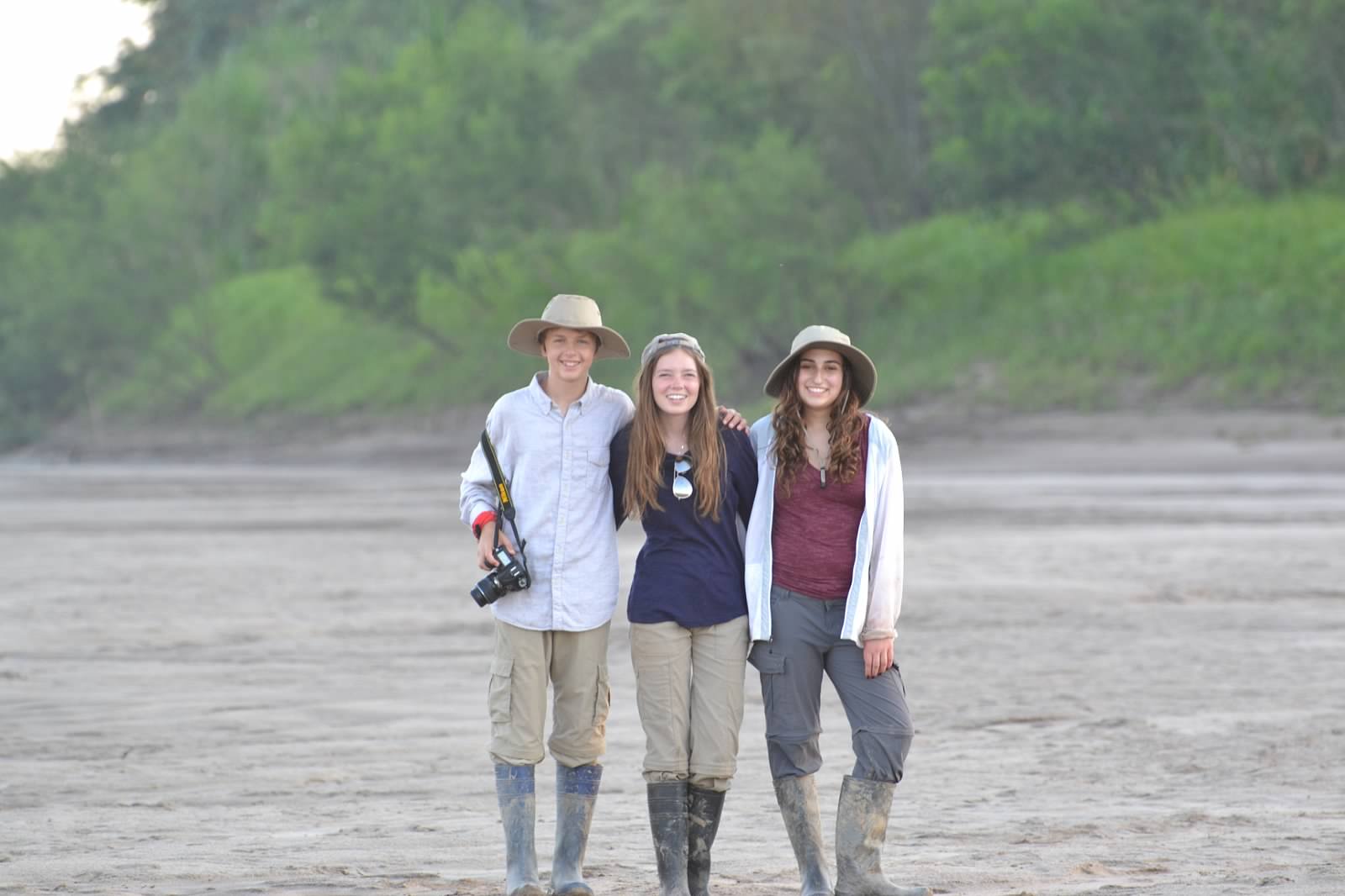6 Lessons Learned from the Amazon Rainforest
Hosting the single largest stretch of rainforest in the world, the Amazon Basin covers an area more than eight times the size of Texas. And with biodiversity that is off the charts and tribes still living in exclusion, there is so much we can learn from it. Here are six lessons we learned on a family vacation to the Amazon on our Travel With Kids Peru tour with G Adventures
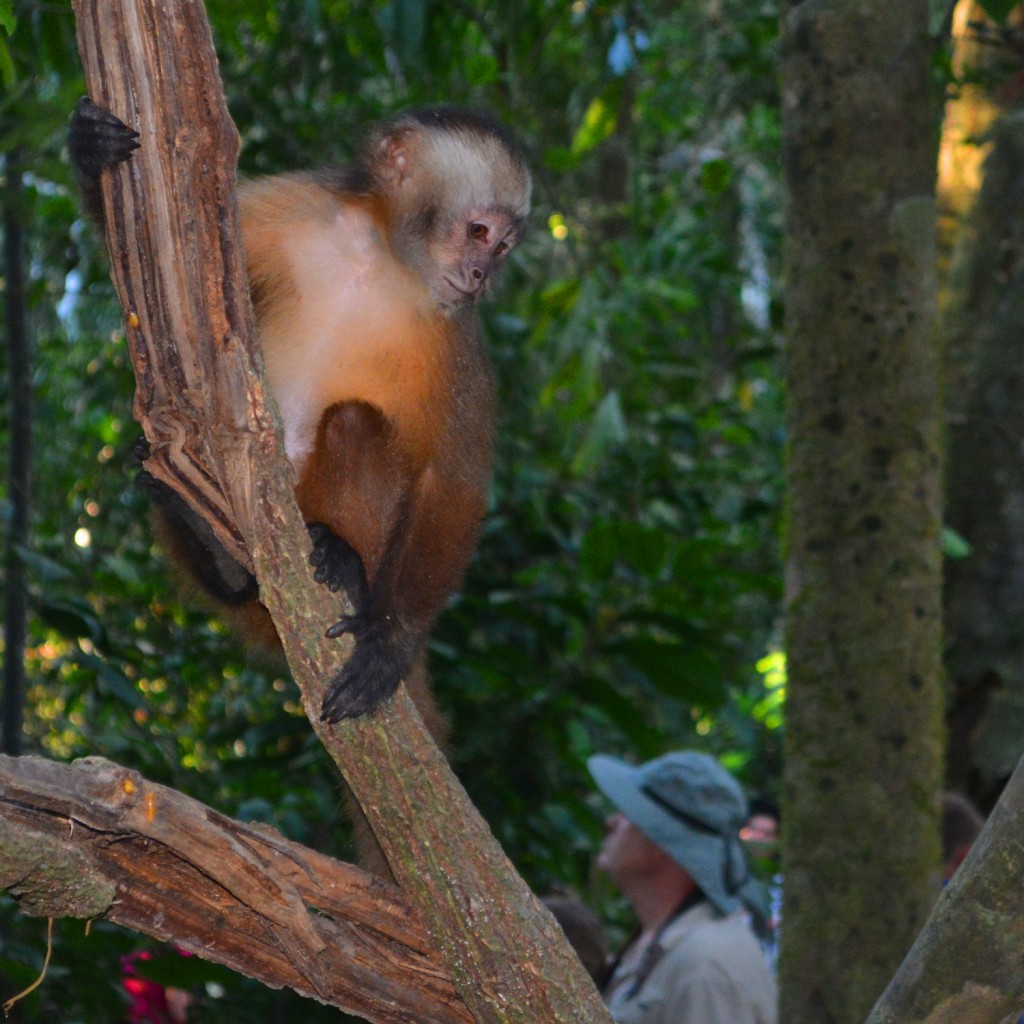
-
All Life is Precious
The Amazon is filled with animals including almost 1,000 types of reptiles and about 2,000 species of birds and mammals. Being in the rainforest, gives visitors an up close and personal experience with nature and an excellent opportunity to view animal behavior in the wild. Watching monkeys living their lives in the Amazon can project a human factor to animals. Witnessing a monkey cradling its baby, or grooming a friend or even getting in a little spat develops a compassion for earth’s creatures. When people feel passionate about the animals, they will feel more compelled to help protect them. We had amazing guides at Corto Maltes Amazonias Lodge.
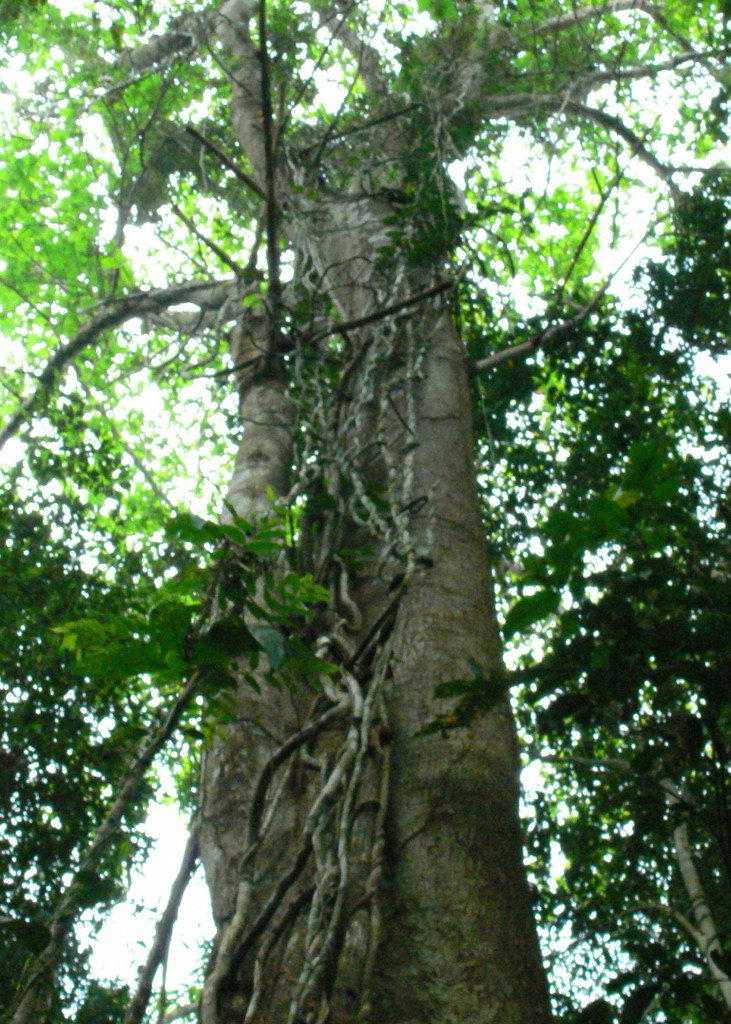
-
Innovation equals survival
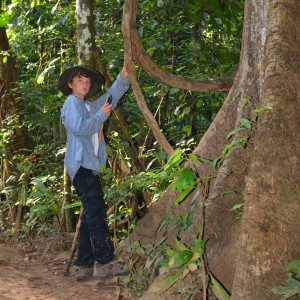 In the Amazon’s sun-starved environment where even the soil is malnourished, there exists a constant competition for life. Animals fight plants, plants fight fungi, fungi conquer animals and so on. But, the Amazon proves that it is not always the biggest guy that wins. The ones that innovate succeed. Some of the Amazon’s smaller plants, the ones that start as little shoots growing in the branch of the tree, are its most deadly. As the strangler fig gets bigger, it send roots to the ground, which then gently winds its way up the host tree, reaching for the sun above the canopy. Once it has established itself, the host tree dies and the fig tree grows in its place. But, the innovation doesn’t end there. Many trees have developed strategies for dealing with these tenacious vines. Some have bark that sheds making it difficult to grasp, others drop a limb that is taken over by vines. It is this innovation and flexibility that keeps each organism healthy and allows it to thrive; a great life lesson for us!
In the Amazon’s sun-starved environment where even the soil is malnourished, there exists a constant competition for life. Animals fight plants, plants fight fungi, fungi conquer animals and so on. But, the Amazon proves that it is not always the biggest guy that wins. The ones that innovate succeed. Some of the Amazon’s smaller plants, the ones that start as little shoots growing in the branch of the tree, are its most deadly. As the strangler fig gets bigger, it send roots to the ground, which then gently winds its way up the host tree, reaching for the sun above the canopy. Once it has established itself, the host tree dies and the fig tree grows in its place. But, the innovation doesn’t end there. Many trees have developed strategies for dealing with these tenacious vines. Some have bark that sheds making it difficult to grasp, others drop a limb that is taken over by vines. It is this innovation and flexibility that keeps each organism healthy and allows it to thrive; a great life lesson for us!
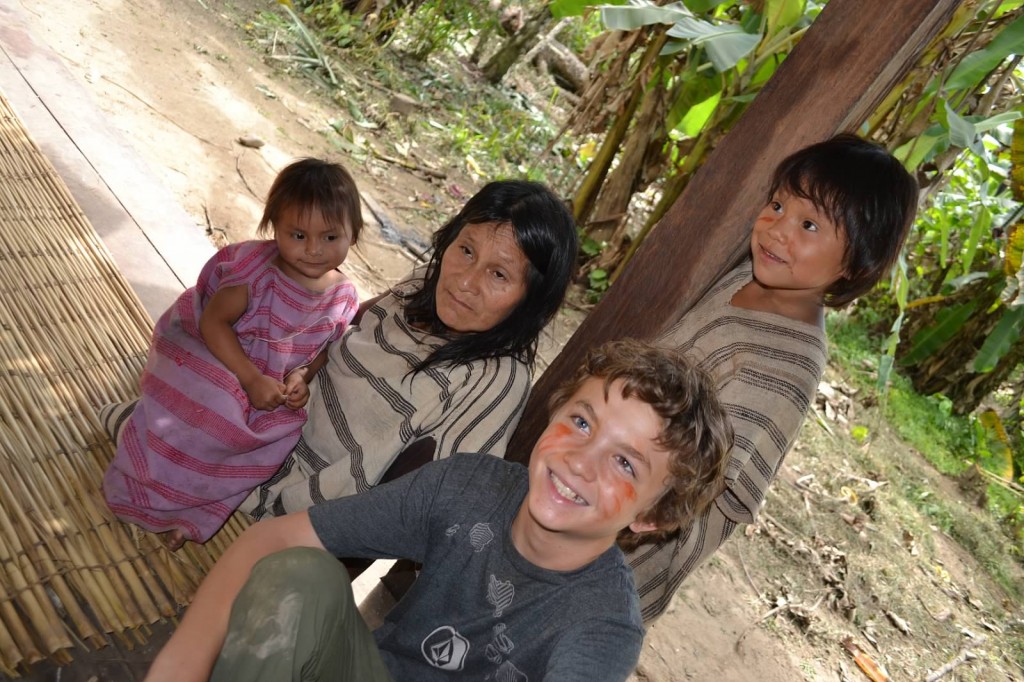
Seamus learns about family life from the Machiguenga tribe
-
Some People are Happier Living off the Land
Many of the tribes living in the Amazon do no want contact with the outside world. There are about 15 known un-contacted tribes living in Peru and about 80 in Brazil. Many of these tribes have sent a representative to talk to government officials and say they do not want to be contacted. They enjoy living off the land and do no want the stresses, diseases and changes that come with modern life. They value their traditions and their way of life.
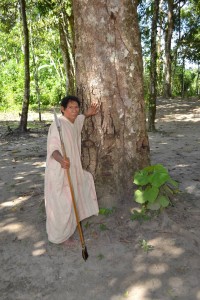 We were lucky enough to meet a family from the Machiguenga tribe in Peru. The rest of their tribe lives eight-days by boat up river. But, in an effort to minimize cultural barriers while maintaining their traditional way of live, the Machiguenga have entered a program with the Corto Maltes lodge where a representative family lives closer to civilization for a month at a time so that they can share their traditions with visitors to the area. The family that we met said that the other families were hesitant to come replace them because they love their lives up river. They shared some of the traditions from their tribe which included weaving their tunics from cotton, painting their faces to show to which tribe they belong, hunting with bows and arrows and more. It was eye-opening for those of us that live in the sometimes chaotic urban lifestyle to hear stories of how they live such simple lives and to hear how happy they are to do so!
We were lucky enough to meet a family from the Machiguenga tribe in Peru. The rest of their tribe lives eight-days by boat up river. But, in an effort to minimize cultural barriers while maintaining their traditional way of live, the Machiguenga have entered a program with the Corto Maltes lodge where a representative family lives closer to civilization for a month at a time so that they can share their traditions with visitors to the area. The family that we met said that the other families were hesitant to come replace them because they love their lives up river. They shared some of the traditions from their tribe which included weaving their tunics from cotton, painting their faces to show to which tribe they belong, hunting with bows and arrows and more. It was eye-opening for those of us that live in the sometimes chaotic urban lifestyle to hear stories of how they live such simple lives and to hear how happy they are to do so!
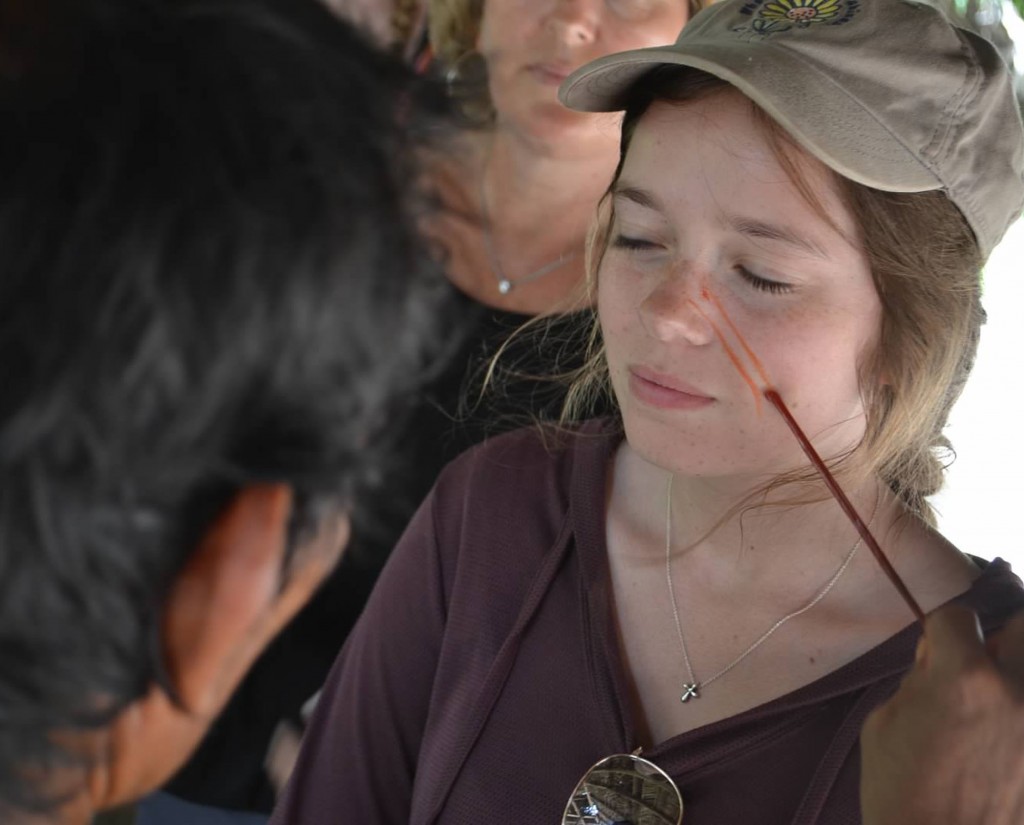
Annie gets her face painted as a welcome ritual by the chief of the Machiguenga tribe
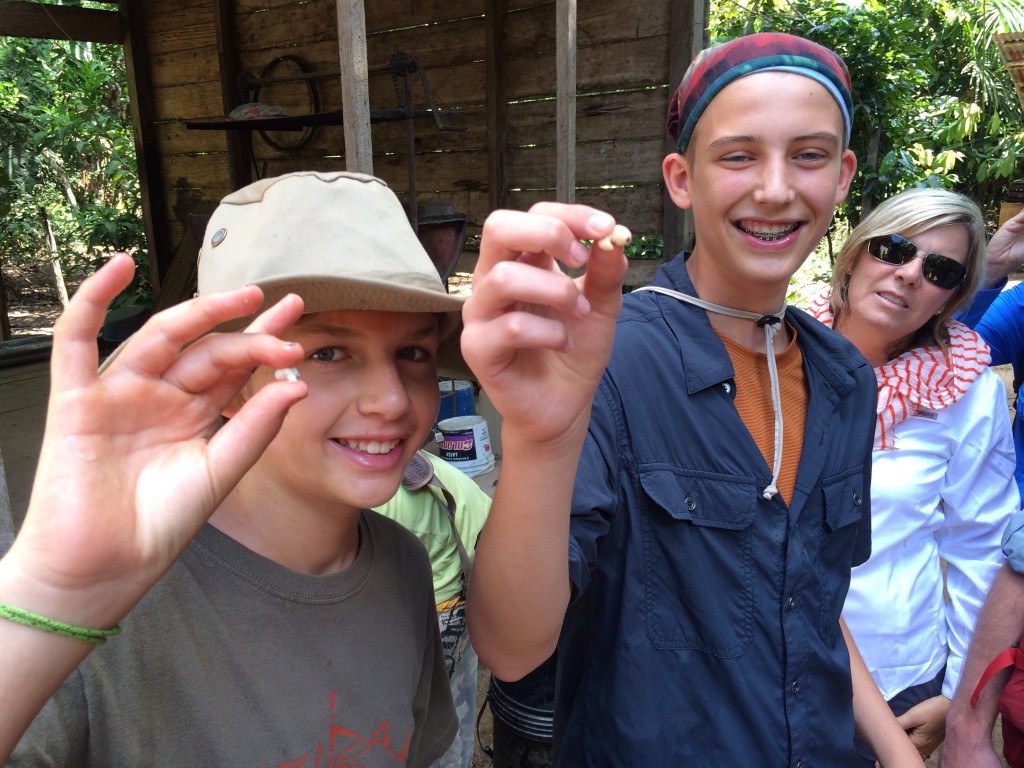
Nathan and Michael trying a “protein-pack” – a grub!
-
Medicine Doesn’t Always Come from a Bottle
Shaman – or medicine men – living in the Amazon use nature to cure disease and more and more often first-world scientists are turning to them for resources. About ¼ of modern pharmaceuticals use ingredients found in rainforests. Scientists have only yet tested about 1% of the Amazon’s plant life and what they have found is fantastic with medicines including steroids, cancer therapy, Alzheimer’s medicines and more. In the Amazon, visitors can learn about natural therapies…and even try a few out themselves. Our kids were fascinated by plants that numbed their skin “like Novocain” and others that eased the itch and sting of bites.
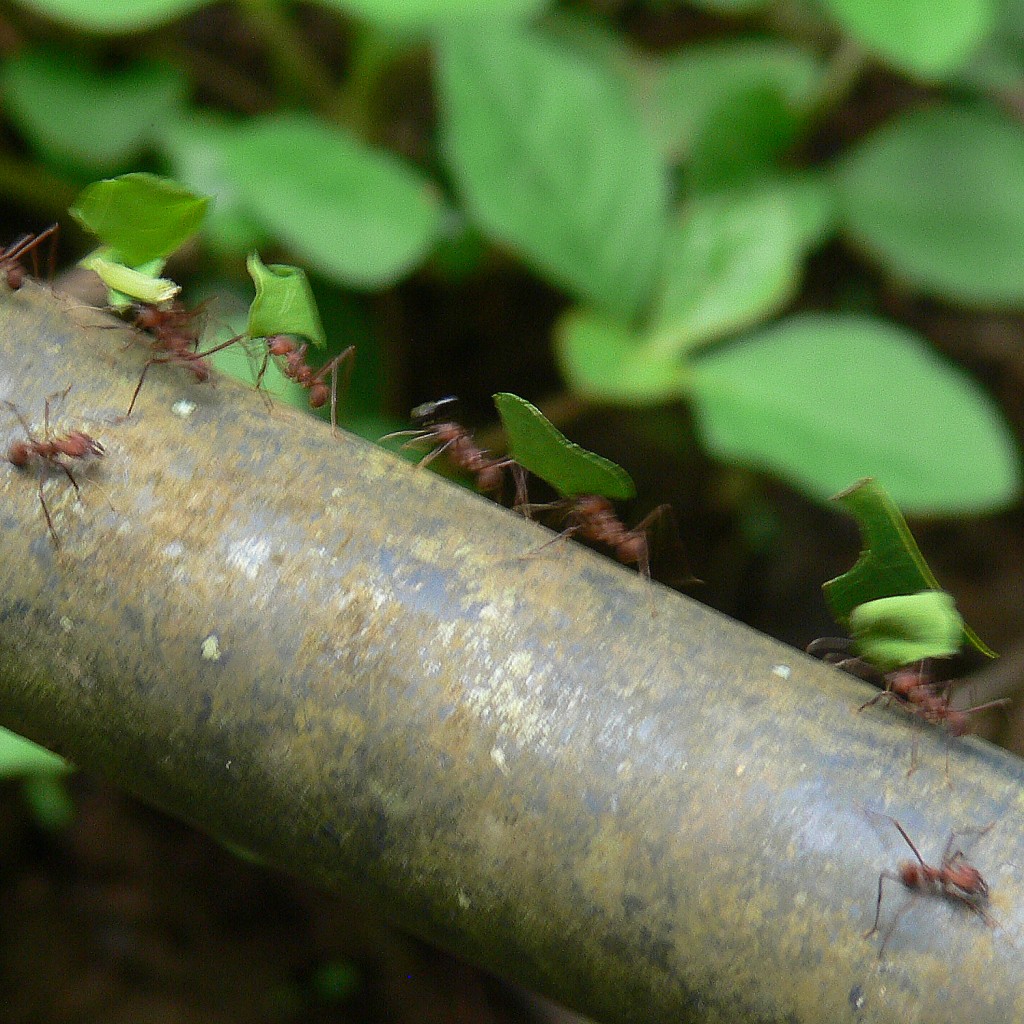
-
Hard Work Pays Off
There are more than 2.5 million kinds of insects that call the Amazon Rainforest home and they have to work hard to keep their place in the food chain. One of the smallest creatures of the rainforest, leaf cutter ants, work together to create giant colonies that can stretch for miles underground. They carry weight almost ten times their own body weight across dips and bumps in the rainforest floor – what would be giant cliffs to us. Their cooperation and each ant doing their job – and doing it well – is what makes their colonies thrive. Our kids learned about why cooperation is so important as they watched these little guys crawling across the forest floor.
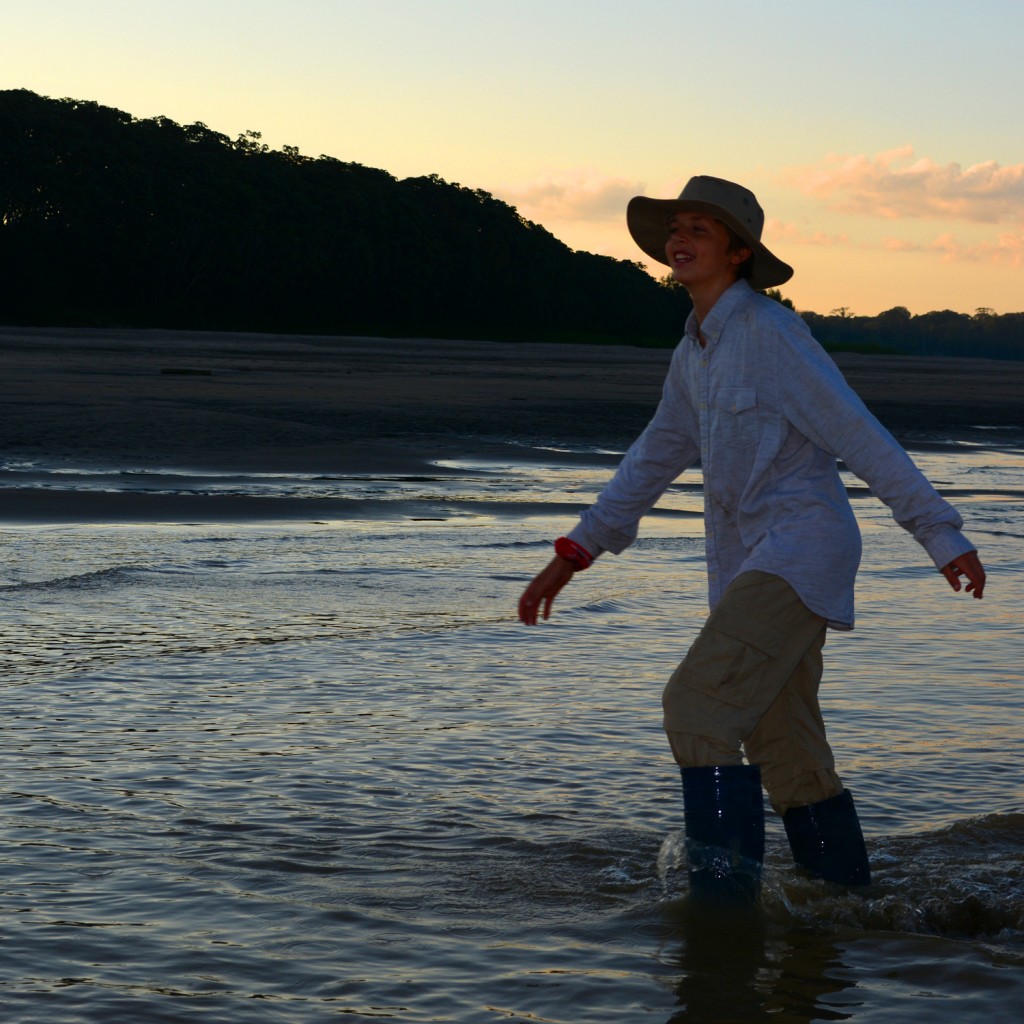
-
Water is a Powerful Force
The Amazon is the largest river in the world and the sheer volume is astounding! The amount of water flowing out of the river is equal to the next largest seven rivers combined! The river is over 4,000 feet long and 150 miles wide where it enters the Atlantic Ocean. During the wet season, it can rise 30 – 50-feet! Not only is that a lot of water, it hosts lots of cool species like Amazon river dolphins (which are pink!), river otters, caiman, capybara and more.
One and half acres of Amazon Rainforest are lost every second mostly due to logging, mining and farming. The Amazon is considered the lungs of the world as it provides 20% of the world’s oxygen, so it would be good to keep it around. Visiting the Amazon Rainforest as a family, let’s kids experience the wonders of the forest and get engaged in efforts to preserve it!
Getting There:
Daily flights to Puerto Maldonado in Peru operate from Cusco and Lima. TACA, LAN and Avianca are good airlines to try. Puerto Maldonado is also accessible by 4WD car or bus during the dry season; however it is a days long, rigorous journey.
G Adventures books adventure trips to Peru and will handle everything from airfare to activities. Their expert guides, or chief experience officers, make the trip fun and educational. Want to travel with other families? Join a Travel With Kids Family Adventure Tour.
Where to Stay:
Getting out on the river with your family makes for an exciting adventure. You can stay at one of the lodges along the river and use their canoes or kayaks to explore, or take nature walks through the forest. We stayed with Corto Maltes about ½ hour by boat from Puerto Maldonado in southeastern Peru. We have also stayed a bit further into the jungle – about 4 hours by boat from Puerto Maldonado – at Refugio Amazonas. Both lodges offered family adventure – hikes, kayaking, and plenty of animal spotting – as well as amenities perfect for families.
If you’d like to spend more time on the river, you can also take an Amazon riverboat cruise. Try Adventure Smith for some good family options.
Travel Insurance:
In third world countries, not everything always goes according to plan, which is why we always get travel insurance. Our new partner, RoamRight, has some excellent policies, many of which offer free coverage for kids, and a cool app with lots of information on the destination you are visiting.
on Twitter
on Facebook
on Google+







